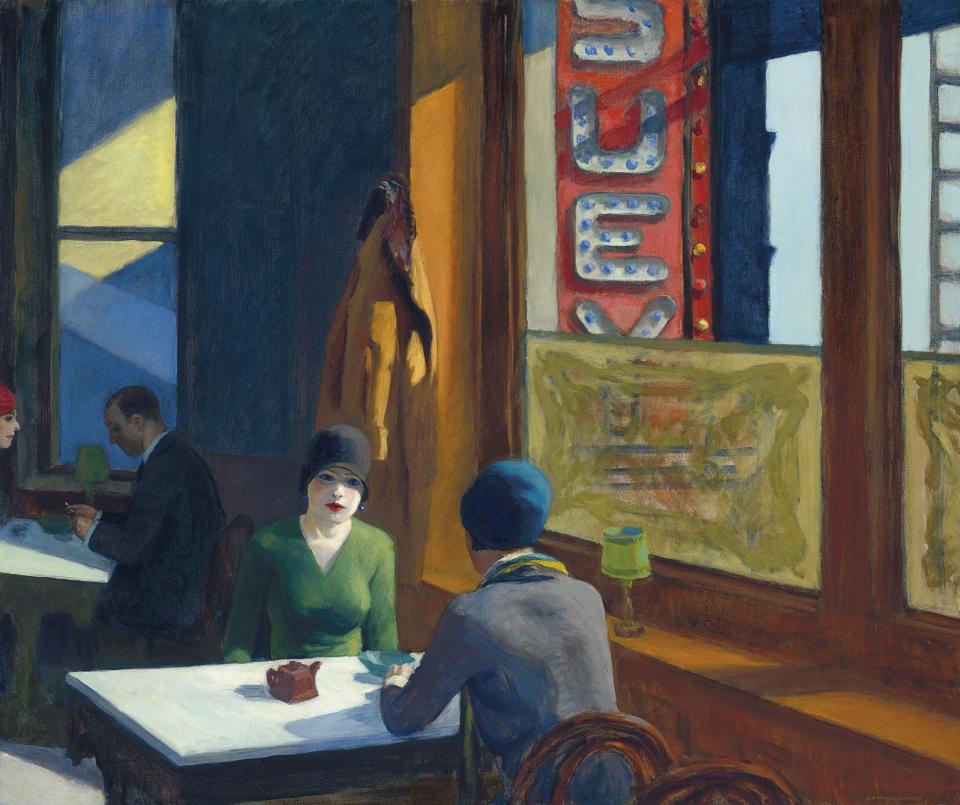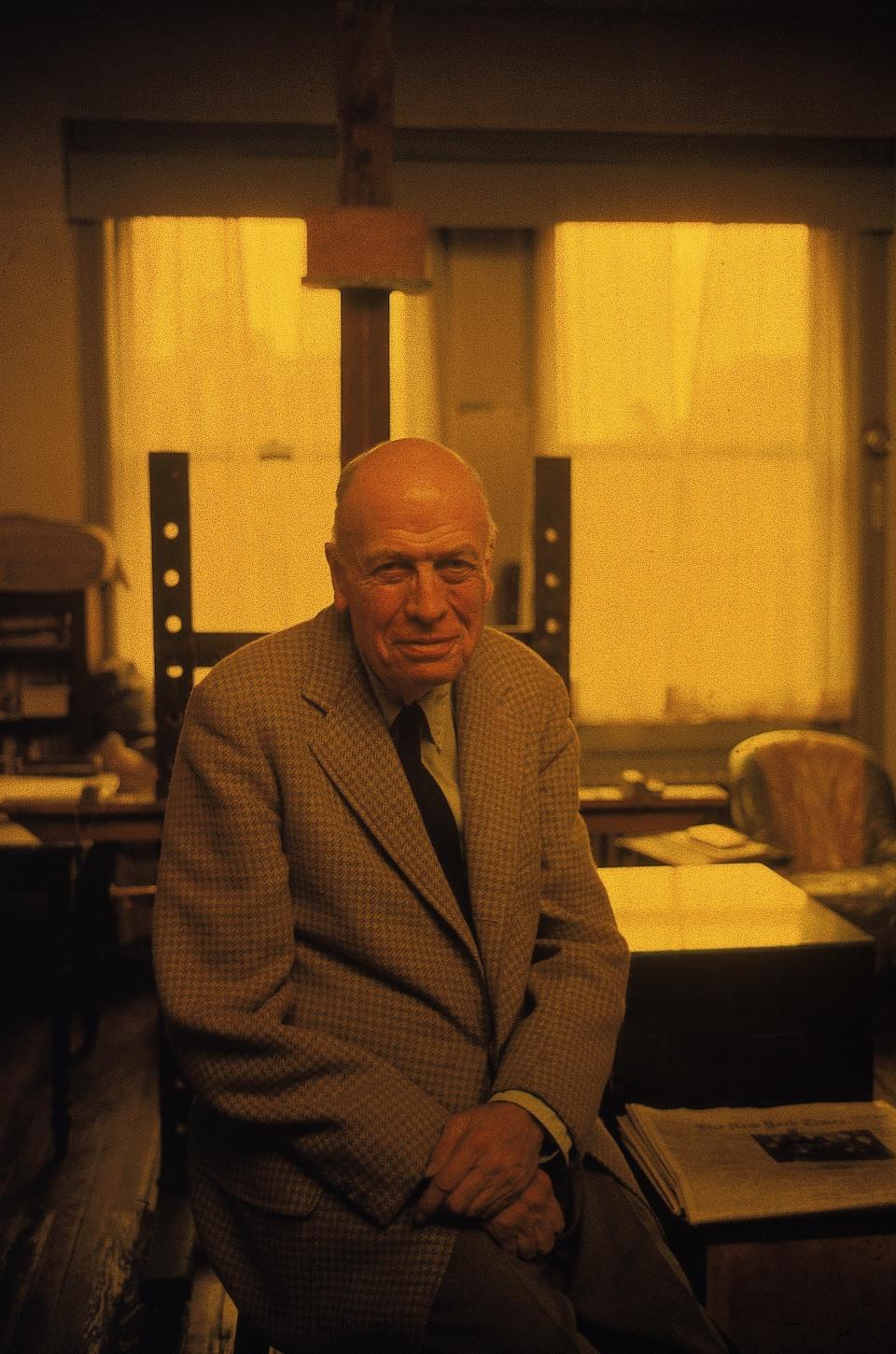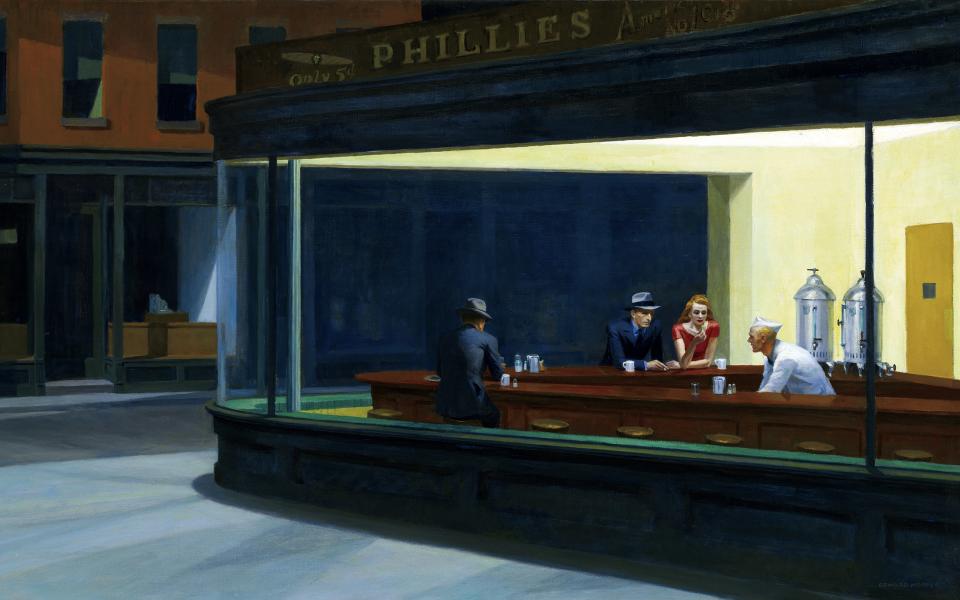Edward Hopper's Chop Suey Is Expected to Top $70 Million at Auction—Here's Why
Many people feel their lives are lived in restaurants, but surprisingly few painters have parked their easels there. Edward Hopper is an exception, from the famous Nighthawks, set in a diner, to paintings set in Automats and cafeterias. Now his 1929 Chop Suey—two young females in a Chinese restaurant—could (easily) break $70 million at a Christie's sale this week.
This pretty painting is far more radical than it looks. Only a decade earlier, the same women would have been considered, well, a bit floozy, not only to be eating by themselves but wearing fairly vivid makeup. But more and more females entered the work force in the early 20th century, as typists, garment worker, waitresses, et cetera, especially in urban centers, and Hopper liked to document societal change.

The auction of it, at Christie’s, is also far more radical than it looks. American art rarely makes prime time at the big auction houses. Indeed, the record price for an American painting has long averaged about only one tenth of that for a masterwork of Impressionism and modern art. Dealers and experts in American art are outright giddy about the new market levels this sale may bring, at a time when Fifth Avenue apartments are pretty cleaned out, after a generation-long art boom, of all those fussy Sisley landscapes.
Will Haydock, head of American Art at Christie’s, predicts a “groundswell” in the market for American modern art due to the sale of the Hopper. (It is coming from the estate of St. Louis collector Barney A. Ebsworth, a savvy travel-industry magnate whose venture capital investments have also included the Build-A-Bear workshop.) Relatively lesser-known American painters like ”Marsden Hartley, Georgia O’Keeffe, John Marin, Arther Dove will benefit from this moment,” Haydock predicts. The auction houses need this to work to orchestrate the next rediscovery of a market, and the next boom.

Edward Hopper
Hopper, too, hasn’t gotten his due, in either art history or in art prices—his current record is $40 million—until the last several years. (A great Whitney Museum of American Art show helped.) He was too unlike what was the fashion of his day. There’s an acute sense of time and place in a Hopper painting, a feeling of time arrested, a backstory. That couldn’t have been further from what the European surrealists like Magritte were doing the same time he was painting Chop Suey. But does it have a touch of surrealism of its own? Novelist John Updike famously said of the women in the painting, “Both seemed to be listening.”
What about the broader topic, on the curious absence of paintings set in restaurants? Chop Suey's very setting is something of a rarity. Scholars put Jesus eating either at a private home or a religious building in The Last Supper, and Peter Breughel the Elder’s famous peasant wedding feast does appear to have waiters, but it’s a rarity for its 16th-century period. The odds are a little better when you add in bars, with touchstone works by Edouard Manet, A Bar at the Folies-Bergère, and also John Sloan’s McSorley’s Bar.

Nighthawks by Edward Hopper
The choice ratchets up when you move outside, with Van Gogh’s empty sidewalk cafe and some really fun-looking lunches Renoir attended. But, still not many. How come? Well, for centuries, there was just no money in it—churches and their patrons funded much of the arts and commissioned works. When that funding faucet dried up, painters turned to other topics. But when it came to eateries: What restaurateur really wants an impoverished artist hanging around for hours painting people eating? There was just no profit in it.
That isn’t true anymore. The presale estimate for Chop Suey is upwards of $70 million, but Christie’s has quietly put a guarantee on it, which means one buyer has already agreed to pay about that amount even before it hits the auction block. (Such deals are used to lure nervous sellers and their heirs and to take some of the risk off the auctioneer.) Expect nearer $100 million. Hoppers are rare at auction, and this one is big, beautiful—and, in so many ways, a game-changer.
RELATED: Pablo Picasso: 5 Facts You Didn't Know About the Famous Artist

